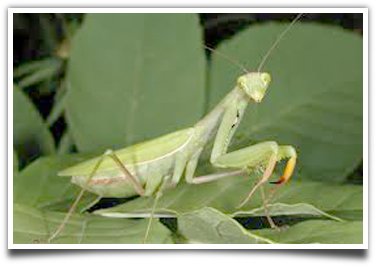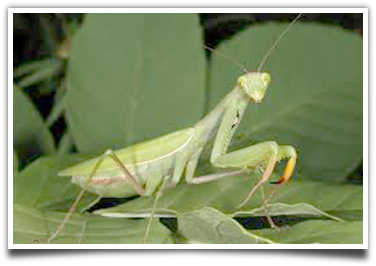Mating Process of Praying Mantises
Have you ever wondered how praying mantes mate? Praying mantises are most popular for the females’ practice of eating their mates after breeding. Also, the praying mantis is known for its extraordinary upright position posture, in which it appears as if it’s praying. In general, the body of a praying mantis is composed of three sections, namely the head, the abdomen and the thorax. Another interesting fact is that the praying mantis is the one and only insect whose head can be moved from one side to another. The abdomens of female mantes are typically heavier than those of males.
Due to the females’ practice of feeding on their mates after breeding, several studies have been conducted on these insects and their reproduction characteristics. The praying mantes often mate in moderate climates at the end of summer.
The female discharges a pheromone in order to attract her male counterpart. It is rare that the females are the ones approaching the males. By and large, males try to escape right after breeding to avoid being eaten by the females. However, the female will sometimes attempt to consume the male even before mating is finished. As a matter of fact, if the female eats the head of the male, the latter is caused to ejaculate more quickly. The headless mantis can continue to copulate and fertilize the female.
Praying Mantis Facts All over the world, there are approximately one thousand and eight hundred known species of insects grouped from the genus Mantis. Because of the anatomical uniqueness of the mantis’ striking and very defined front legs that are bent at a particular angle resembling a praying position, this genu is most commonly referred as the praying mantis. The praying mantis comes from an entire, bigger group of mantids, from the class Insecta and from the phylum Anthropoda. Most praying mantis facts More... Getting Rid of a Mantis If you want to get rid of a mantis, wear thick gloves then pick the insect up. Try picking the praying mantis up from behind to position the mouth and forelegs in front of your hands. This insect has sharp and strong front legs, and can give a painful bite. Mantises are not poisonous and deadly, but they can be hurtful through their bite and forelegs. Use thick gloves for minimizing this possibility. Put the mantis into a box and More... Taming a Praying Mantis In order to start taming a praying mantis, put your hand open at the door of the cage to allow the praying mantis to walk onto your palm. You must avoid picking the mantis up or grabbing it. Instead, simply let this insect climb into your hand. This way, the praying mantis is caused to think that your hand is a safe place to get in. If the insect is not willing to go to your hand, put a tiny More... Praying Mantis Facts on its Diet The praying mantis is one of the most interesting- looking insects that you may find. The appearance and the movements of this insect really intrigue kids. But aside from its appearance, the diet and the predatory behavior of the praying mantis are also fascinating. There are some praying mantis facts on its dietary habits that will surely surprise kids. Even though the praying mantis is a type of insect, its diet also consists of other insects especially those that are More... Breeding Praying Mantis When you have plans of breeding praying mantis, you should know how to distinguish the females from the males, among other praying mantis facts. One of the easiest ways to do this is by counting the segments at their abdominal region. Female mantises have six segments while males have eight. Keeping the mantises healthy isn’t much of a work. When you got hold of a pair, you must first feed them properly with insects for about two weeks prior to More...
|




